Many people are accustomed to considering drip coffee makers as a device for making “whatever” drink for those who are used to large mugs of relatively weak coffee or just want to be able to drink something (not necessarily coffee) while sitting at the monitor. We observe a similar situation in the nearest European countries: it is enough to visit Finland or Estonia – and you can see a lot of drip coffee makers, from which you will be poured “coffee” in a cafe or even in an ordinary store. The quality of this drink in most cases will be significantly below average. Why is this happening? There are, as usual, two reasons: non-compliance with the proportions of coffee and water (coffee is very often filled up less than it should be), as well as non-compliance with the temperature regime (most budget drip coffee makers are rather careless about what temperature the water enters the filter).
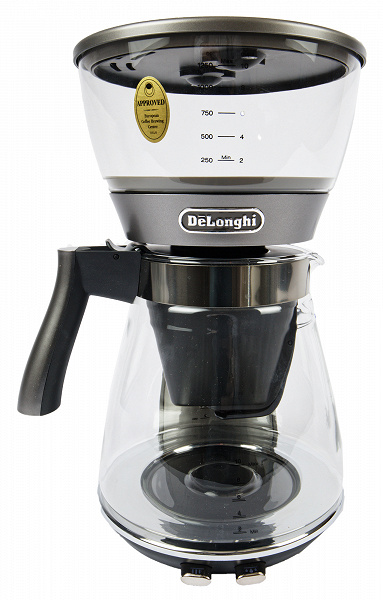
The hero of our today’s review – the De’Longhi Clessidra ICM17210 drip coffee maker – claims to be a “professional” device, so temperature control and other important parameters should be on top. Let’s check if this is actually the case.
Characteristics
| Manufacturer | De’Longhi |
|---|---|
| Model | Clessidra ICM17210 |
| Type | drip coffee maker |
| Country of Origin | China |
| Warranty | 2 years |
| Service life * | 2 years |
| Power | 1800 W |
| Housing material | glass, metal, plastic |
| Case color | black, metallic |
| jug material | glass |
| jug volume | 1.25 l |
| Auto power off | there is |
| Control | mechanical |
| Indicators | selected mode |
| Additionally | two coffee brewing modes |
| The weight | 2.47 kg |
| Dimensions (W×H×D) | 22.5×38×33.5 cm |
| Network cable length | 1m |
| Retail offers |
* Contrary to common misconception, this is not the period after which the device will definitely break. However, after this period, the manufacturer ceases to bear any responsibility for its performance and has the right to refuse to repair it, even for a fee.
Equipment
The coffee machine is delivered in a voluminous cardboard box designed in the De’Longhi corporate style: the main color is black, the secondary color is dark blue, full-color printing, high-quality photographs.
On the side faces you can get acquainted with the main characteristics of the device and its key advantages. The information is presented in several languages, including Russian.
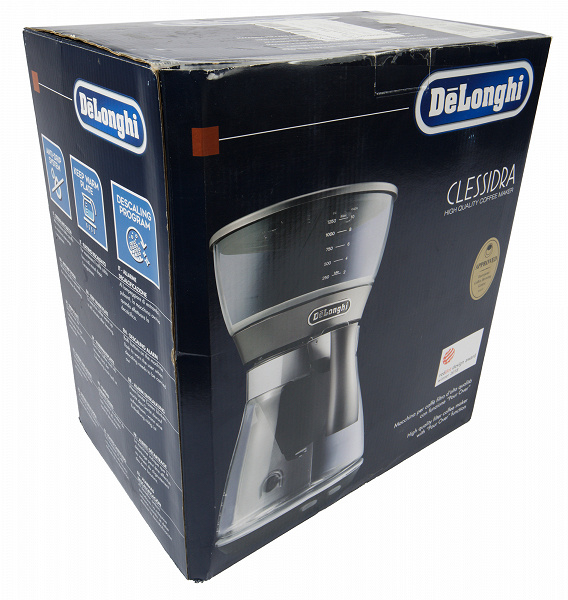
Opening the box, inside we found:
- coffee maker with lid
- jug with filter
- filter stand
- measuring spoon
- instructions and printed materials
At first sight
When meeting, the coffee maker makes a more than worthy impression. Literally everything pleases the eye: the original design, reminiscent of an hourglass (clessidra is translated into Russian exactly like that), and the materials used, and the build quality of the device. It is pleasant to take the device in hand, it is pleasant to deal with it, it is pleasant to start using it. Let’s take a closer look at it.
The main materials from which the coffee maker is made are glass (reservoir and jug), plastic (body) and metal. The design of the coffee maker is far from standard, familiar to those who are used to using budget drip coffee makers. There are several significant differences, but the main one is the presence of a special glass tank for heating water (it is located at the top of the device)

The glass container for water has a graduation from 250 to 1250 ml, duplicated “in cups” – from 2 to 10 cups. It also has a sticker, according to which the coffee maker is approved by an organization called the European Coffee Brewing Centre. This is a good sign: most likely, our device thus confirms its compliance with some standards.
This is what the device looks like from the back.
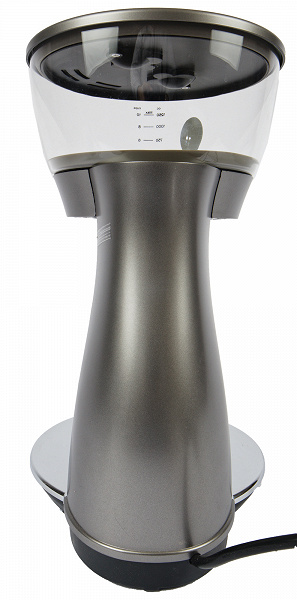
The water container is closed with a plastic lid, which has a comfortable two-finger grip and holes to release excess steam.
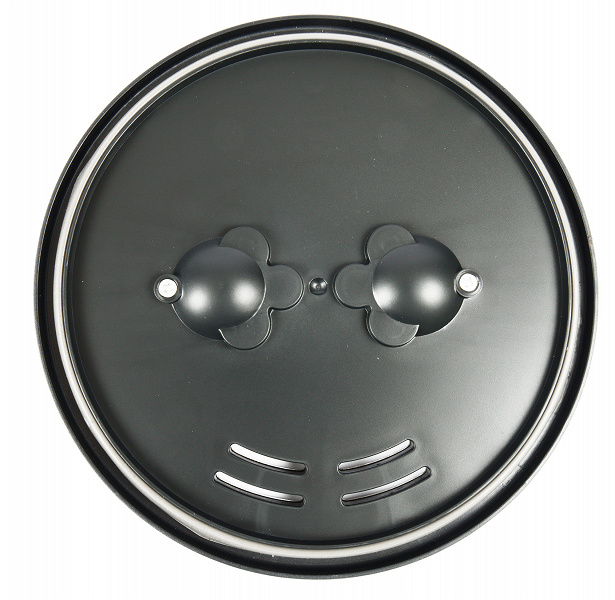
Let’s take a look inside the tank. Here we see a metal bottom, under which a hidden heating element is hidden. In the center is a filter mesh through which water will be supplied. On the left is a temperature control sensor.

The glass jug for the finished drink also has a graduation from 2 to 10 cups. The jug has a plastic lid that opens with a small tab on the handle. The lid itself has holes for water. Why are they here? The fact is that the brewing unit with a filter and coffee in our coffee maker is installed directly in the jug, and water will flow through these holes.
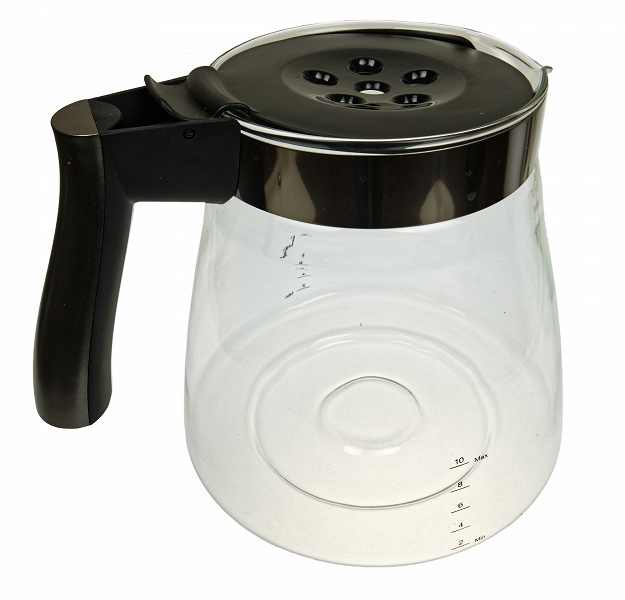
This is what the device looks like assembled – together with the installed jug and brewing unit.

And this is what the “shower” looks like, from which hot water will flow. As we can see, there are five holes at once, which should ensure the most uniform flow.
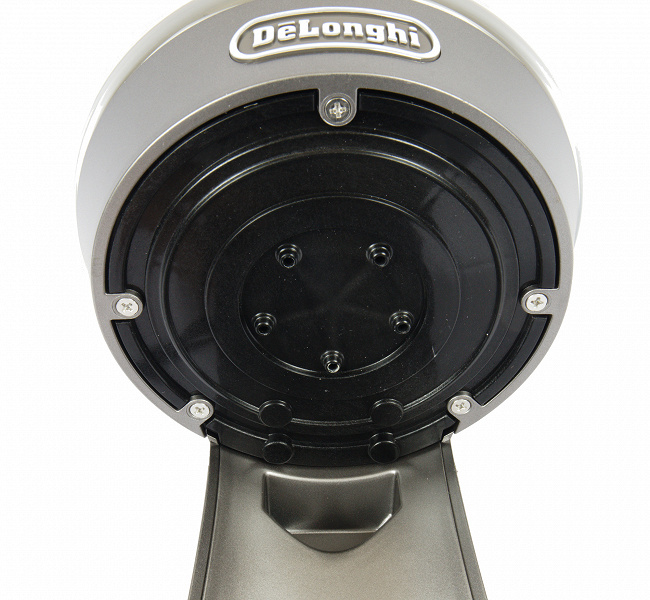
The brewing unit of our coffee maker looks more or less standard. It’s a plastic cone with a fold down plastic handle. At the bottom there is a hole for dispensing coffee. There is no reusable filter in the kit, so you will have to immediately stock up on standard 1 × 4 paper filters.
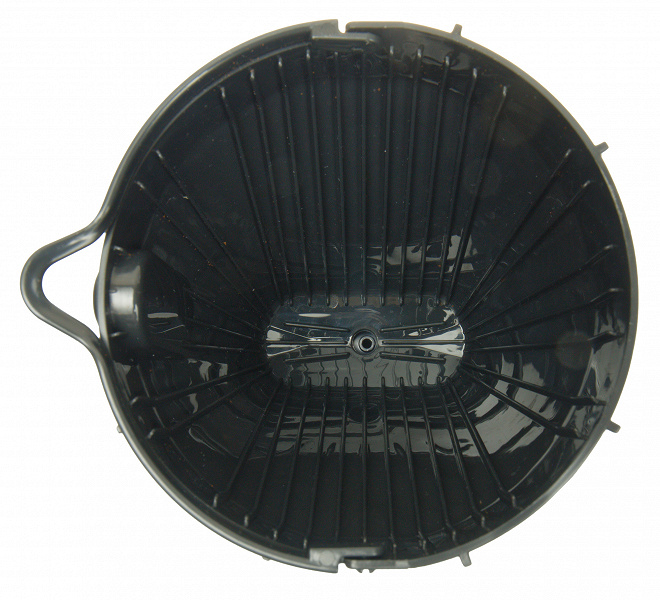
To store the filter, the coffee maker has a special plastic stand. Also included is a measuring spoon for ground coffee.
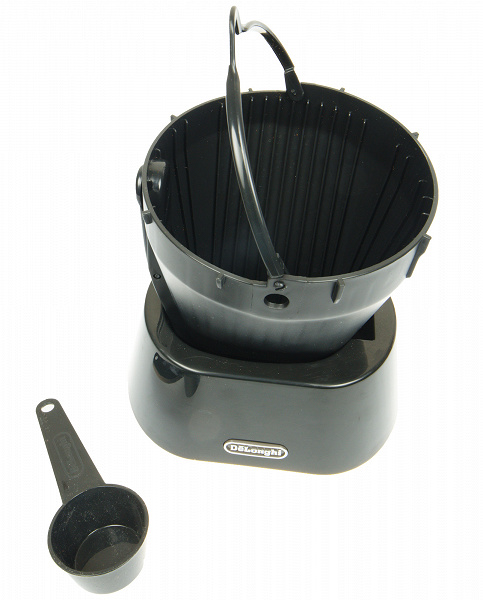
In the lower part there is a heating element, with the help of which the temperature of the finished drink will be maintained. Below it are two control buttons corresponding to two modes.

At the bottom we see rubber feet that prevent slipping, as well as stickers with technical information and model number.
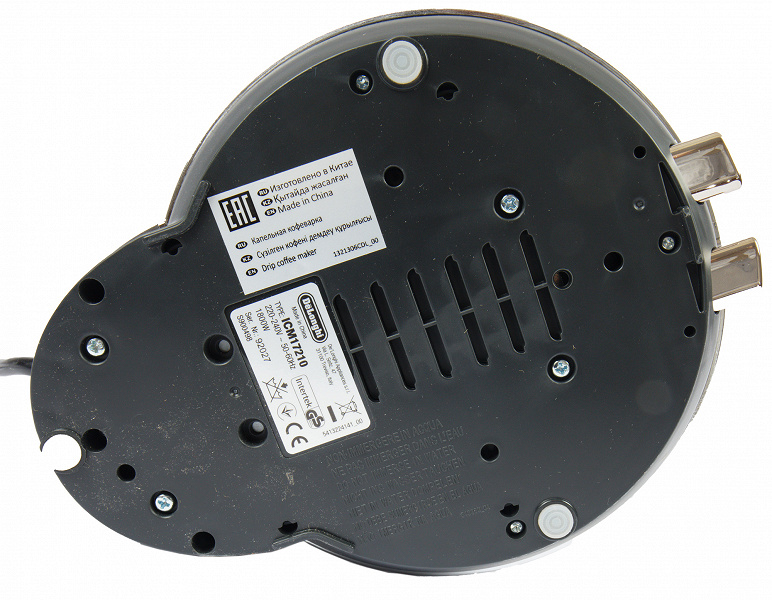
The jug can be placed in the only way – with the spout forward (a special recess is provided for it on the body). In the lower part of the case, above the heating panel, there is a button that interrupts the water supply in case the jug is not in place or it is installed incorrectly.
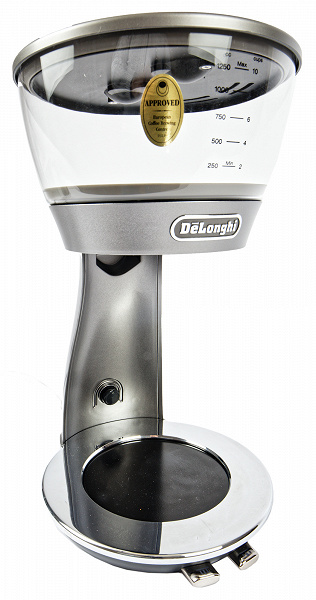
Well, let’s try to make coffee and see what our coffee maker is capable of.
Instruction
The coffee machine comes with a user manual and a warranty booklet. We are primarily interested, of course, in the instruction.
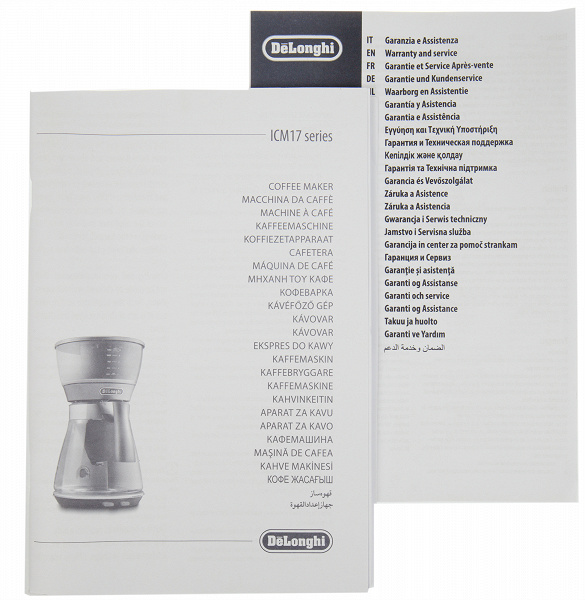
It is a black and white A5 brochure printed on high quality matte paper. Despite the fact that the brochure looks rather weighty, the Russian language accounted for only four pages, plus a few pages of illustrations at the beginning.
Having studied them, however, we found answers to almost all questions that interest us regarding the operation of the device and its care.
Control
Our coffee maker has two modes, corresponding to fast and slow flow of water. A button is responsible for launching each of the modes: water jets are drawn on one, drops on the second. The manufacturer calls them “high-quality” and “rich” brewing buttons, which, in our opinion, are not intuitive formulations (and saturated, what is not so high-quality?).

After starting the selected mode, the corresponding button starts to be highlighted in white. The coffee maker accompanies the beginning and end of work with a non-switchable sound signal (loud squeak).
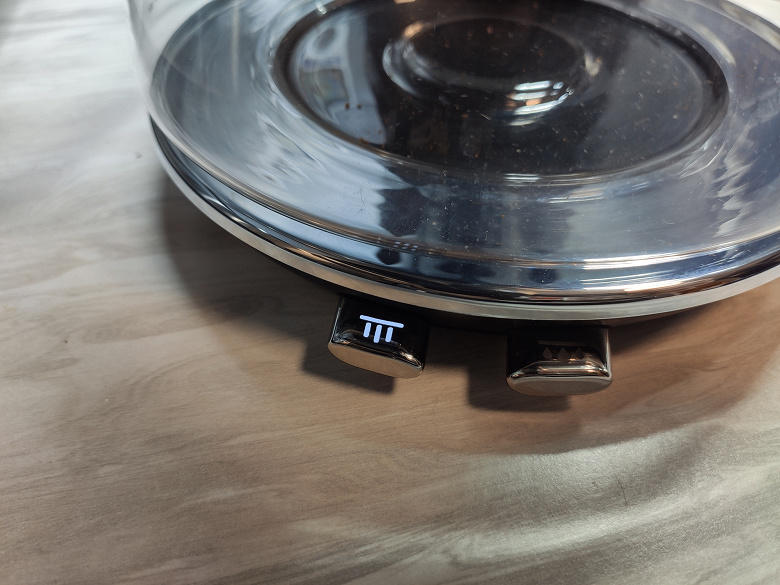
Exploitation
Before using the coffee maker for the first time, the manufacturer recommends pouring water twice in the coffee preparation mode, and then proceeding directly to the preparation of the drink. In the instructions, the manufacturer reports what parameters are important when making drip coffee. This is:
- water temperature in the range from 92 to 96 degrees
- brewing time 4 to 6 minutes
- correct ratio of coffee and water (7.5 g per 125 ml)
I must say that our coffee maker is significantly different from most budget models. The process of brewing coffee here takes place according to fundamentally different rules.
By what means is optimal compliance achieved? Unlike budget coffee makers, which start flowing almost immediately after the first portion of water has heated up, our Clessidra first heats the entire volume of water, and only after that it starts flowing. At the same time, the flow time can be adjusted: the built-in valve can open and close the water supply in the desired mode.
Of course, this method increases the preparation time of the drink. However, it’s worth it. Compliance with all kinds of standards and GOSTs is important.
Moreover, our coffee maker controls the temperature of the water not only at the start of serving, but also during the preparation process: if the water in the tank has time to cool down, the device will turn on the heating for a few seconds until the optimum temperature is reached.
The user, therefore, can only choose the most suitable grinding. Everything else the device will do for him automatically.
What nuances and features did we notice in such a design? The coffee maker will heat water in much the same way as a regular kettle, and also quite loudly click the valve that opens / closes the water supply. At the end of the work, an audible signal will sound, after which the device will switch to the beverage heating mode for 40 minutes. You can disable this mode by pressing the button.
We liked the solution with a funnel that is installed directly into the jug, but there are some nuances here too: in order to pour coffee into a cup, you have to remove the plastic holder with used coffee and place it on a special stand. On the one hand, this is correct: in this way, the user will get used to immediately getting rid of used coffee (we all know how great the temptation is to leave it in the coffee maker until the next time). On the other hand, sometimes you just want to drink coffee, and not mess with used filters.
Finally, let’s say a few words about design. The appliance certainly looks great… only in the process of making coffee, both the upper flask and the lower jug will fog up almost immediately. It doesn’t look scary at all, but it’s not so stylish anymore.
Care
The rules for caring for the appliance are simple: the water tank and the body of the coffee maker can be wiped with a cloth, the jug can be washed under running water with a mild detergent.
Also, the coffee maker has a special descaling mode, launched by pressing two buttons at the same time. Descaling should be done as needed. The manufacturer recommends using a special coffee maker care product for this purpose.
Our measurements
We measured the main parameters that characterize the operation of the coffee maker.
First of all, we were interested in such characteristics as consumed electricity and temperature at various stages of coffee preparation.
Measurements showed that the power of the device corresponds to the declared one: 1702 W on the wattmeter with the declared power up to 1800 W.
The appliance consumes 0.144 kWh to prepare a standard serving (full jug) of coffee. With a 40-minute warm-up, energy consumption rises to 0.16-0.17 kWh.
Speaking of drip coffee makers, in the “practical tests” section, we evaluate the data we have received and consider them in terms of deviation from the standards.
In order to be able to judge objectively, we, as usual, turned to the recommendations of the Specialty Coffee Association of America (SCAA). Recall that the ideal coffee in a drip coffee maker, according to these recommendations, will turn out if the weight of water is about 15 times the weight of coffee.
It is easy to calculate that for our coffee maker, 1250 ml of water will require 83 g of ground coffee. However, some roasters recommend sticking to the proportion of 60 g of coffee per liter of water. If you count in this way, then it will be enough to fill a full jug with 75 g of ground coffee. Well, the same SCAA can recommend even less – 55 g per liter. De’Longhi in the instructions recommend that you follow the proportion of 7.5 g per 125 ml, which we decided to stop at.
Grinding for a drip coffee maker is coarse. Before cooking, it is recommended to pour a small amount of hot water through the paper filter in order to remove any possible paper taste. Note that the smaller the amount of coffee being brewed, the more important it is not to skip this step. If it will be difficult to feel the papery taste when preparing two liters of coffee, then if you are preparing 1-2 cups, then the foreign taste can be more than noticeable.
As regards the temperature of the inlet water, it must reach a minimum of 92 °C and not rise above 96 °C during the entire cooking process. We put a probe thermometer in the water tank and found out that coffee brewing starts when the water temperature reaches 97 °C. Obviously, 2-3 degrees can be safely attributed to losses, so it can be argued that our “hourglass” falls into the standards one hundred percent.
The coffee jug must keep the beverage at a temperature of at least 80°C and no higher than 85°C. In our case, the temperature of the water in the jug was 80°C immediately after preparation, but subsequently dropped to 76°C. Not perfect, but quite drinkable.
Well, let’s go directly to testing.
practice tests
Full jug, fast flow mode
We poured 75 g of ground coffee into the filter, poured 1.25 liters of water into the water tank and started the first mode (quick spill).
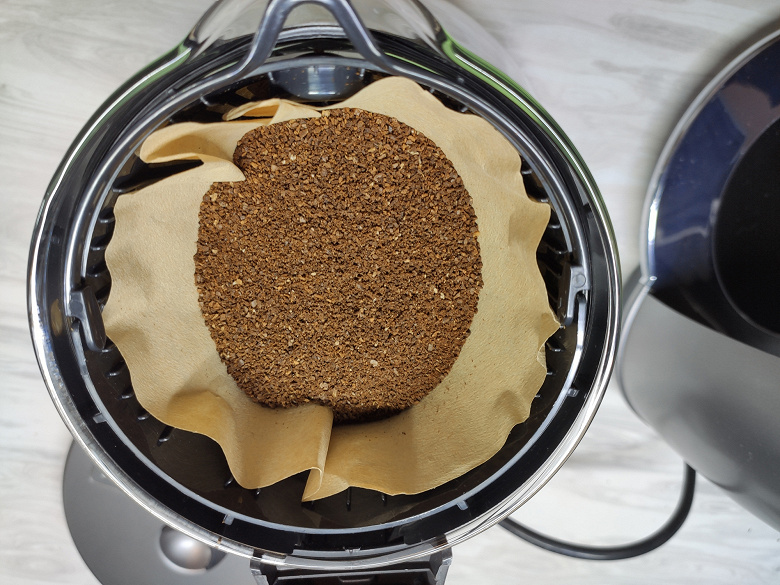
The coffee was ground just before brewing. The grind was chosen quite large – as it should be for a drip coffee maker.
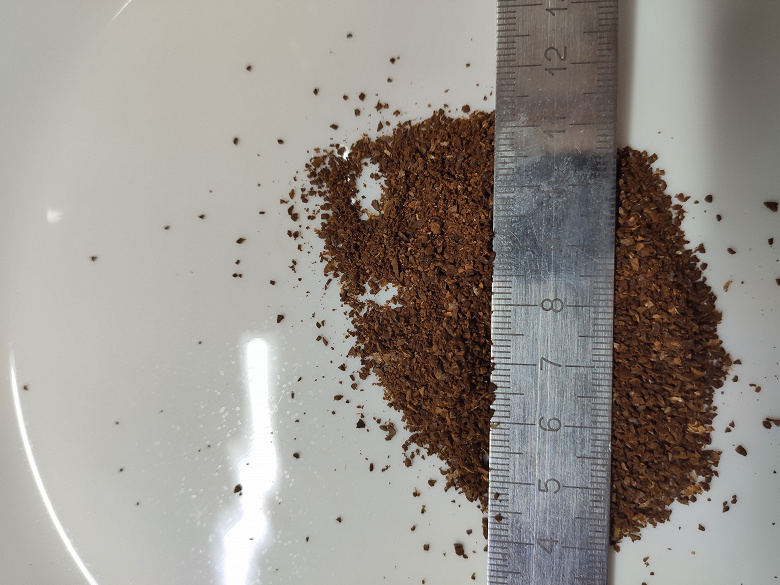
It took our coffee maker 4 minutes and 28 seconds to preheat the water. When the stopwatch showed 9:30 the water was almost over, and at 9:55 the coffee maker gave a signal indicating the completion of the cooking process. We just have to wait until the rest of the coffee flows into the jug from the filter.
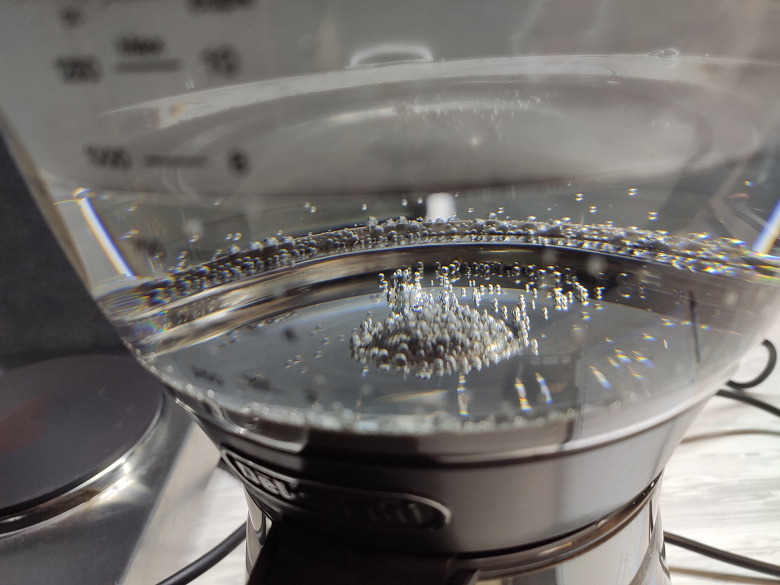
The brewing time in this way was 5-5.5 minutes.
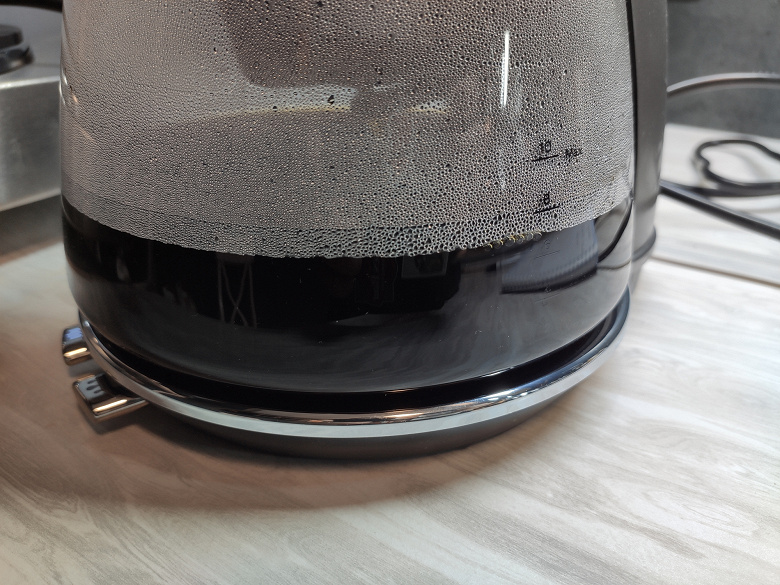
As we can see, our coffee maker exactly fell into the recommended range, not only in terms of temperature, but also in terms of flow time. To do this, during the cooking process, the device stopped the water supply a couple of times and warmed up the water several times as it cooled.
All this had an extremely positive effect on the taste of the drink: the coffee turned out exactly the way we wanted. The temperature of the freshly brewed coffee was 84°C.
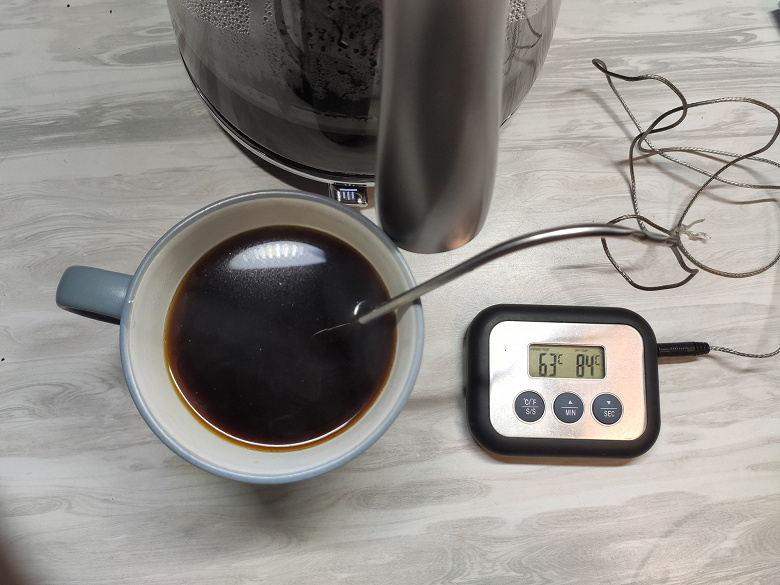
This is what used coffee looks like immediately after brewing is completed.
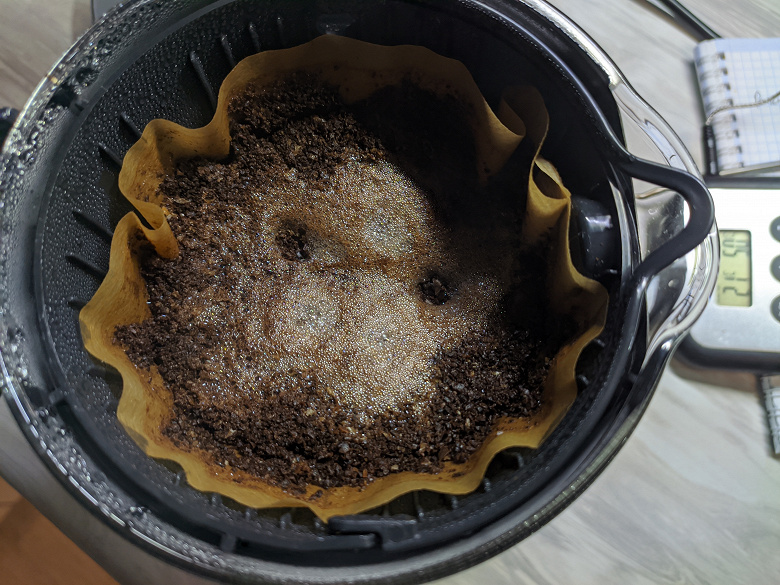
Result: excellent.
Full jug, slow flow mode
What about the second mode? How is it different from the first one? It turned out that the slow flow mode of the coffee maker stops the water supply about 12 times, thereby increasing the total preparation time of the drink to 11 minutes and 48 seconds.
The brewing time thus increases to 7 minutes, which cannot but affect the taste and strength of the coffee: the finished drink is more saturated and strong.
Thus, the user has a choice – you can cook in any of the two modes, depending on your own taste preferences.
Result: excellent.
4 cups
And what if you take not a full jug, but less? How will the flow time change?
We took 500 ml of water and made coffee on the first, and then on the second modes. It turned out that in this case it took 2 minutes and 10 seconds to heat up the water, and 2:15 for the first mode and 3:55 for the second for the strait.
The finished drink turned out to be quite adequate, but not as tasty and rich as when preparing a full jug. From which we draw an obvious conclusion: in our coffee maker, if possible, you need to prepare a full portion of the drink.
Result: good.
findings
We certainly liked the De’Longhi Clessidra ICM17210 drip coffee maker. We did not find a single complaint about the device in terms of convenience, water temperature or flow time. Clessidra confidently complied with all standards, and therefore, it was not in vain that she received the approval of the European Coffee Brewing Center . This device turned out to be head and shoulders above absolutely all budget drip coffee makers. Therefore, we consider the rather high price of the device to be more than adequate.
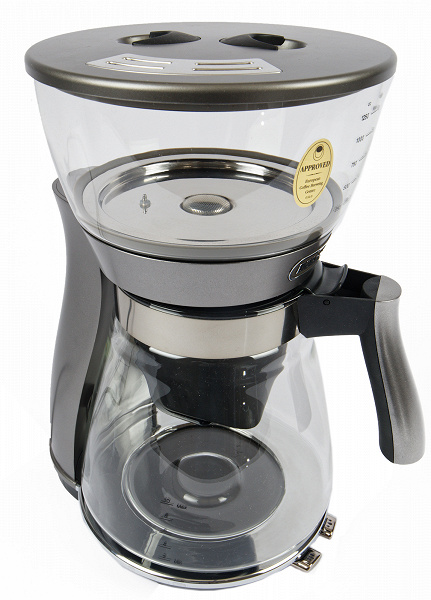
What about disadvantages? There are few of them: the user will have to get used to the non-standard filter arrangement, as well as learn to ignore the non-disabled clicks and beeps. Perhaps that’s all.
Pros :
- elegant design
- precise temperature control
- fast and slow brewing methods
Cons :
- loud clicks and beeps
- to pour coffee, you must first remove the filter




